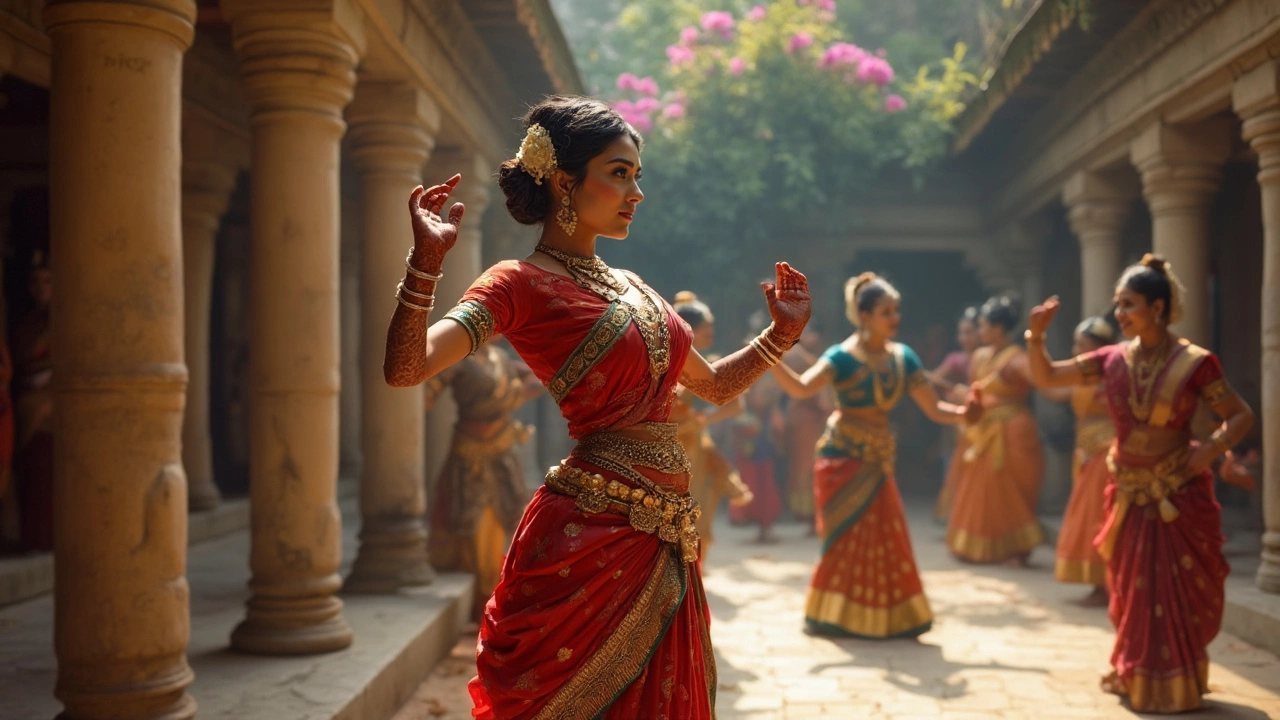Eastern Dance: Traditional Forms, Cultural Roots, and Tamil Connections
When we talk about eastern dance, a broad category of movement traditions from Asia that blend spirituality, storytelling, and rhythm. Also known as classical Indian dance, it’s not just performance—it’s a living language passed down through generations. In Tamil Nadu, this takes shape in dances like Bharatanatyam, a highly structured dance form originating in Hindu temples, with precise hand gestures, footwork, and facial expressions, and Karakattam, a vibrant folk dance where performers balance pots on their heads while dancing to drum beats. These aren’t just shows; they’re acts of devotion, community memory, and cultural identity.
Eastern dance doesn’t exist in a vacuum. It’s tied to Carnatic music, the classical music system of South India, with complex ragas and talas that guide every step and pause. The rhythm in Karakattam comes from the same drum patterns used in temple ceremonies. The stories in Bharatanatyam? They’re pulled from ancient Tamil texts like the Silappatikaram. You can’t understand the dance without hearing the music, and you can’t grasp the music without seeing the movement. Even the costumes—bright silks, heavy jewelry, and flower garlands—are designed to amplify every motion, turning the dancer into a living sculpture.
What makes eastern dance in Tamil culture unique is how it survives outside the stage. It’s in village festivals, wedding processions, and even school recitals. Unlike Western dance forms that often focus on individual expression, these dances carry collective meaning. A dancer isn’t just performing—they’re honoring ancestors, invoking deities, and keeping stories alive. That’s why you’ll find Karakattam and Puliyattam (tiger dance) still performed in rural Tamil Nadu, not as museum pieces, but as part of daily spiritual life. And while Diwali and Navratri get global attention, it’s these local dances that keep the soul of Tamil culture beating.
What you’ll find in the posts below isn’t just a list of dances. It’s a window into how movement, music, and meaning come together in Tamil society—from the temple courtyards of Madurai to the streets of Chennai. You’ll learn how these traditions connect to folklore, why certain movements mimic gods and animals, and how modern dancers are keeping them alive without losing their roots. Whether you’re curious about why dancers wear bells on their ankles or how a folk dance can carry centuries of history, the answers are here.
